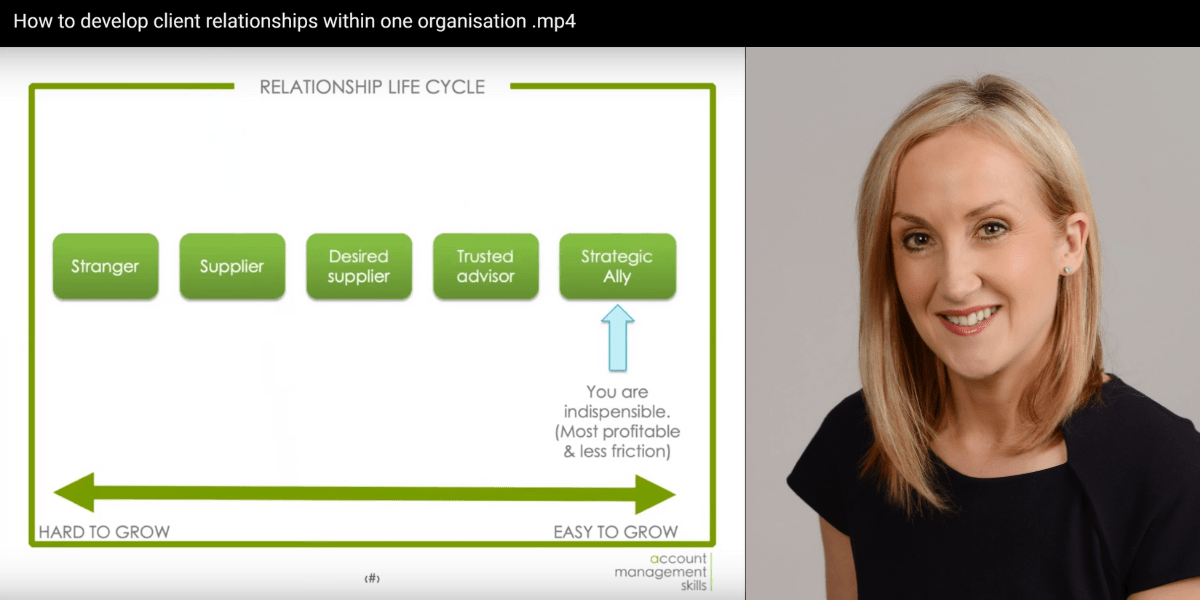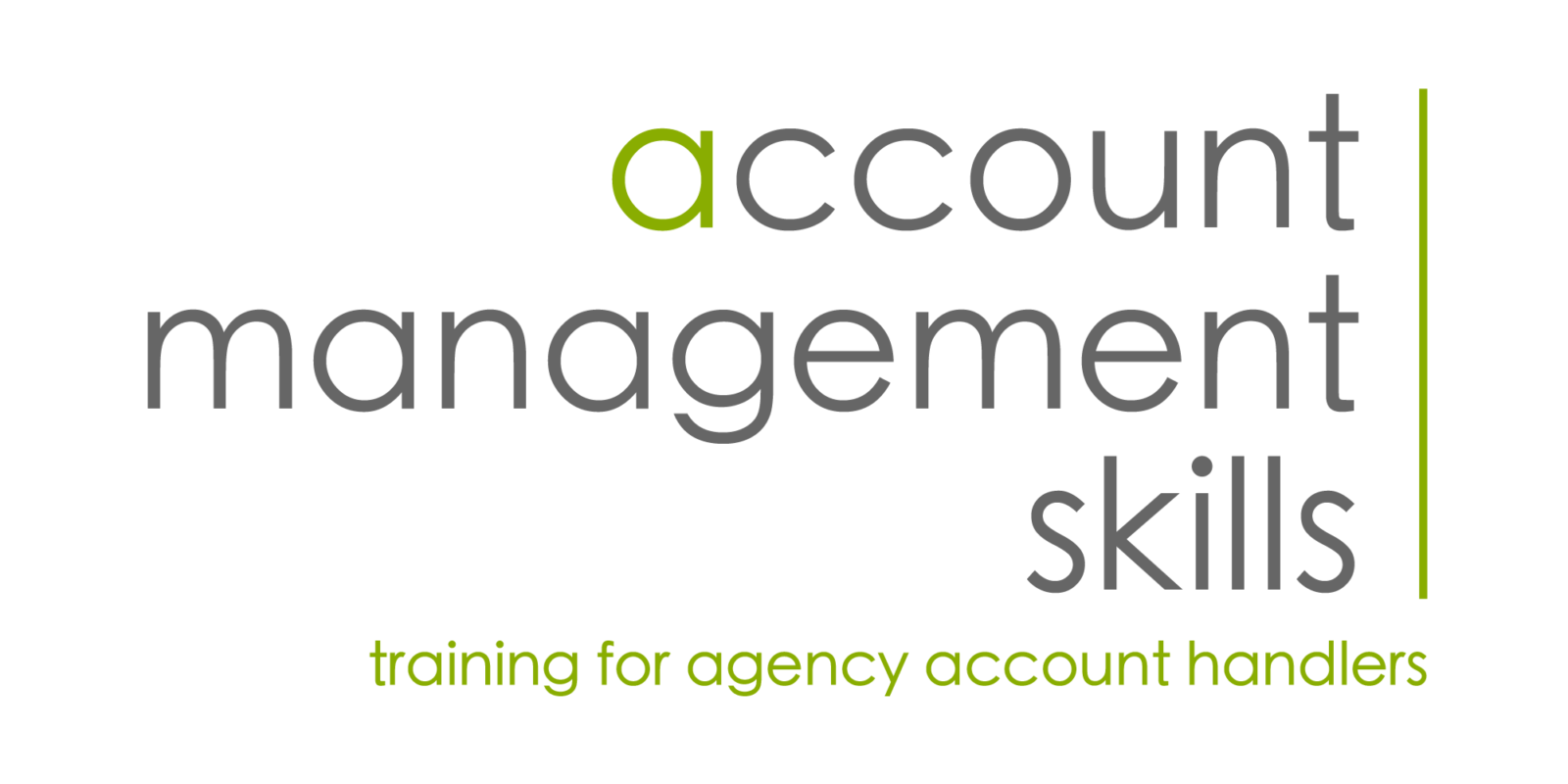
Developing New Opportunities Within Clients Company
When it comes to growing client accounts, there is no one size fits all approach. I’ve recorded this quick video to show you what to consider when you are working with a large client with multiple stakeholders and are looking for a more systematic way to cultivating multiple relationships and ultimately aiming to strengthen your position within their organisation.
The client relationship life cycle
You will always start out as a relative stranger to your client when you’re working with them for the first time and this is where a lot of your initial effort goes into setting up the relationship correctly so that you are managing expectations for the engagement early on.
Having a thorough onboarding process can make the difference between a profitable and unprofitable engagement so time spent here is important.
For example, where you haven’t uncovered who the decision makers will be for your project, later down the line you may end up making multiple rounds of unnecessary amends to a project – because all the stakeholders weren’t involved from the get-go – because you didn’t ask!
Then as your engagement continues, you do a good job and you become a regular supplier, or maybe even one who the client seeks out i.e. a ‘desired’ supplier for other similar projects and engagements.
At this stage, however, the relationship is still transactional in nature i.e. no loyalty exists and business is not growing organically.
Nevertheless, as you and your team start to understand the company’s business goals, their challenges, their brand, their products, and their world, you move from a desired supplier to a trusted advisor.
More than just a chosen supplier, at this stage the client starts to come to you for advice and you start to be able to help them with their business challenges through the delivery of your products and services as well as other ideas you can bring. This happens because of your in-depth knowledge of their industry, their customers, their market and their business.
Why is the strategic ally position so important?
But why is it such good news if you end up at the strategic ally? Well not only is this great for the client (saved time having to explain things, no barriers to telling you how they feel about your work because you have cultivated an environment of trust, you understand their culture, sign-off processes, individuals involved, etc and can support them when navigating their internal environment for things like sign-off on projects or seeking support from other departments, you know how they prefer to work and what their expectations are etc), but it is also good news for you (you can pro-actively bring more ideas because you have a better understanding of their world and there should be less resistance to listening to your suggestions).
Where I frequently see account managers go wrong is a) They are not sure of all the services their agency offers and can’t explain some past case studies and b) they underestimate the value of solely focusing on solving the client’s business problem rather than always thinking the solution to a client’s problem has to be done by the agency. The client is buying business outcomes from an agency so the more you can help them reach their business outcomes and solve their biggest business problems the more valuable you become.
Solving their biggest business problem might not be something you can help with – but you may be able to point the client in the right direction! Entering an account management training might help to find the best way for your ally. For example, maybe the client has a legal problem affecting an area of the business you are not familiar with, you might be able to recommend a company who could help or point them to relevant resources or even articles online talking about other companies who have experienced a similar situation. Taking suggestions to the client shows you care.
Client development is less about selling more of your stuff and more about identifying their challenges and pains, seeking ways to add value – value could be introducing them to someone, sending them a piece of information pertinent to their business goals, introducing a consultant or supplier you think they need and who has a good reputation or proactively coming to them with ideas to help them with their business. It doesn’t have to necessarily be about your own products and services.
Using a client relationship mapping tool
Often we approach client relationship development without any kind of plan. However, taking the time to stand back, look at all the relationships in one client company and then taking a slightly different approach for each one means you’ll be wasting less time and be more focussed on having the right strategy and will also be able to articulate your approach to the rest of your team.
Map your clients using a Client Mapping tool as demonstrated in the video which will enable you to plot the most supportive and the most influential within the client organisation and tailor your approach accordingly.
Check out the video for each unique approach to development of each of your relationships.
Another key thing to do is to never, ever forget the importance of frequent and fluid communication regardless of who you are interacting with.
If you want to make sure that you are perceived as a strategic advisor then superb communication is key.
If you are being blocked by a client contact who is very influential then tackle it head on by carrying out a client/agency survey where you interview your client and seek ways to resolve any potential resistance the client may have. Client reviews are an excellent way to identify the client’s future plans so that you are aligning yourself to where they are headed.
There really is no excuse not to be talking to your clients on a regular basis. Sending them snippets of news that are relevant with your thoughts for them to consider, so set up Google Alerts with the names of your client’s competitors, check out the Executive Summary on their website to look for their corporate growth targets and align any information you send them with their business objectives. Surprise them with invitations to events or by sending them a news article you’ve read that you thought they’d enjoy. Send them a personal video message rather than a written email just to check in or wish them a good weekend whilst giving them a project update.
I hope you will adopt this step by step approach to developing client relationships. Let me know the ways you have developed relationships within one organisation by leaving a comment in the box below.
